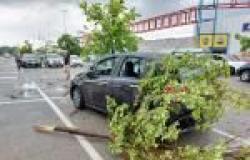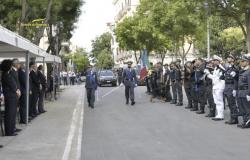
One year after the floods, the ‘highly urgent’ works for the ordinary safety of the territory, along the Ravenna rivers, from the Santerno to the Savio, are running out, from the Via Emilia to the sea the embankments have been reprofiled and reinforced (and not only where there had been breaks), the trees along the banks were cut (not uprooted). A second phase will begin on July 1st, that of the ‘urgent’ works already scheduled and aimed at consolidating the safety conditions prior to the floods: a phase which, as far as the province of Ravenna is concerned, should only concern the Senio river and in particular, as underlined by the Councilor for Public Works and Civil Protection at the Municipality of Faenza, Massimo Bosi, “the completion of the expansion tanks between Cuffiano and Tebano”, i.e. that intervention which, begun 19 years ago, was not brought to fruition conclusion.
But to better protect the Ravenna area in the event of a repeat of a catastrophic event like that of 16 May 2023, all of this will not be enough, more is needed, work is needed in all the rivers, expressed differently between the foothill areas and the plain towards the sea and which upstream of the Via Emilia they can only take the form of expansion basins or temporary flooding areas: well at the moment there is still no concrete project on this front. Perhaps something more could emerge closer to June 30 because by that date, specifies the Region, General Figliuolo “will approve the definitive special plans”, but it seems certain that they will not contain long-term interventions. The mayor of Ravenna Michele de Pascale says: “To date the commissioner structure has presented a 600-page plan full of philosophy, full of analyzes of what happened and general indications on how to operate, but it does not identify any work As regards the protection of Ravenna, the reference is obviously for the waterways downstream of the Via Emilia and the plan only talks about maintenance of the banks, connections with the Reclamation Consortium, and relocations here the whole territory is at risk, what is needed is to prevent the water from flowing out of the rivers. I expected much more, that is, a list of works to be done. A request that I had already expressed to Prime Minister Meloni Mi I hope that time can be recovered quickly with close discussions between the commissioner structure and the municipalities for concrete action. And I’m worried about the date of June 30th, the day on which Figliuolo’s role expires: will he be reconfirmed or replaced? into oblivion.”
The extraordinary commissioner’s plan, already endorsed by the Region, was presented a week ago to the lowland municipalities (priority had been given to the hilly municipalities where landslides cause the greatest problems): it is the result of collaboration between the commissionerate, Basin Authority, three universities and regional territorial agency. Councilor Bosi explains: “It only contains the guidelines, the perimeter within which the territories and their main actors, starting with the municipalities, will have to plan the interventions that are deemed suitable to prevent the repetition of an event like that of a year ago which, must never be forgotten, saw twenty million cubic meters of water pouring into the Lamone, compared to which the one million and 200 thousand cubic meters of a few days ago in Veneto almost disappears. And this perimeter is mainly given by the expansion tanks or the areas of temporary flooding. It goes without saying that this will be a phase that will last for a period of between five and ten years because there will have to be meetings between municipalities, the Basin Authority, the Region, the commissioner structure, decisions to be made, drafting of projects and then procurement and execution of the works”.
Taking into account the conformation of the territory, it is well understandable that expansion basins or flooding areas can only be built in the sections of the rivers upstream of the Via Emilia or in the Cesena area for the Savio, Forlì for Ronco and Montone, Imolese for the Santerno; for Lamone and Marzeno the spaces are narrow, about ten kilometres.
Bosi explains: “The experts of the commissioner structure have examined the regional plans for interventions against floods drawn up by the Region from 2010 onwards and have necessarily updated them to today’s very different conditions. And in this perspective for the Lamone, and also for the Marzeno, the flooding areas could be more useful, i.e. private and cultivated lands to be temporarily flooded in the event of exceptional floods. In this context, the orientation is to adequately and annually compensate farmers for this type of easement: it goes It goes without saying that in the event of flooding there would be no refunds. This solution is preferred to expansion tanks: between Brisighella and Faenza there are no spaces for tanks capable of withstanding a flood of twenty million cubic meters of water expansion tanks hypothesized in 2010 along the Lamone between Brisighella and Faenza was not even four million cubic meters. Very little indeed!”.
Projects and works, these for the flood basins or areas, which naturally also concern the other rivers which a year ago contributed to flooding the outskirts of Ravenna, the Cervese and the Lughese, namely the Montone, the Savio and the Santerno on which interventions of this kind can only refer to the territories of other provinces: Forlì-Cesena and Bologna.





